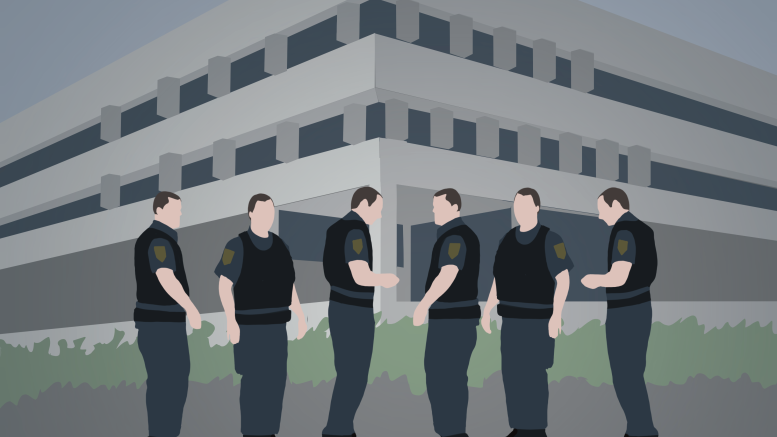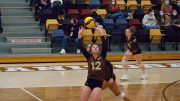The Manitoban’s Oct. 18, 2023 issue ran a feature covering the memorial Friday, Oct. 13 organized by Students for Justice in Palestine. During the memorial, police asked students not to display Palestinian flags, storing them in a police patrol car. Later, students’ flags were returned, but officers asked students to keep their flags “understated” due to “political sensitivities.”
The police presence was allegedly meant to increase and provide security, yet through police interference students felt understandably frustrated and upset.
Security personnel do usually appear in different forms on campus. The University of Manitoba’s security services offers the app UM Safe, and transportation safety programs. University security guards also often patrol campus, too. However, police presence on campus is incredibly uncommon and concerning for a host of reasons.
The incident between students and police on Oct. 13 is indicative of a larger issue of policing, and specifically policing on campus.
The University of Manitoba stresses students have a right to a safe and respectful space. One of its policies is preserving a respectful place of work and learning, which entails providing an inclusive environment free from discrimination or harassment.
The university also has a policy regarding violent or threatening behavior, which emphasizes “creating and maintaining a safe, positive and productive work and learning environment that is free of violence.”
These university safety policies align with the foundations of what safe spaces are. However, there are flaws within the construction of safe spaces that police presence amplifies.
Bennett Carpenter, Laura Goldblatt and Lenora Hanson illustrate issues with safe spaces in their article “The University Must Be Defended.” They argue there are problems with safe spaces, specifically with how the feeling of security can only be derived “in relationship to danger or a lack of security.” If there are spaces that are safe for some people, that implies there are other spaces — and therefore other people — that are unsafe.
A second issue the article outlines lies in how security is targeted against “unauthorized,” racialized bodies, or those who appear to be out of place. This is emphasized further when these bodies “have been displaced and dispossessed by the physical expansion of the university.” Safe spaces result in the maintenance of areas of exclusivity through police surveilling and being ever more violent toward people.
The presence of police on campus impacts the safe spaces the university intends to create by enabling and legitimizing policing and surveillance in these spaces. On campus, this surveillance does not encourage a feeling of security, but rather creates tension and fear because of the history and ongoing cases of racism and police brutality within universities.
Police also differ from security guards in that there is an intense increase in militarization. Having armed police officers in uniform on campus to provide security often causes an adverse effect on students.
These impacts directly challenge the policies set forth by the university. At the Oct. 13 memorial, the police presence and intervention intended to provide security created tensions within the student body and resulted in frustration because students felt they were unable to carry the flag that represents them.
If the university intends to create inclusive environments where students feel safe, a police presence on campus directly conflicts with that aim.
Students should always feel safe on campus and are promised the right to be free from any form of discrimination and violence. All campus spaces should be safe for all students, and this cannot be done with the presence of police.





